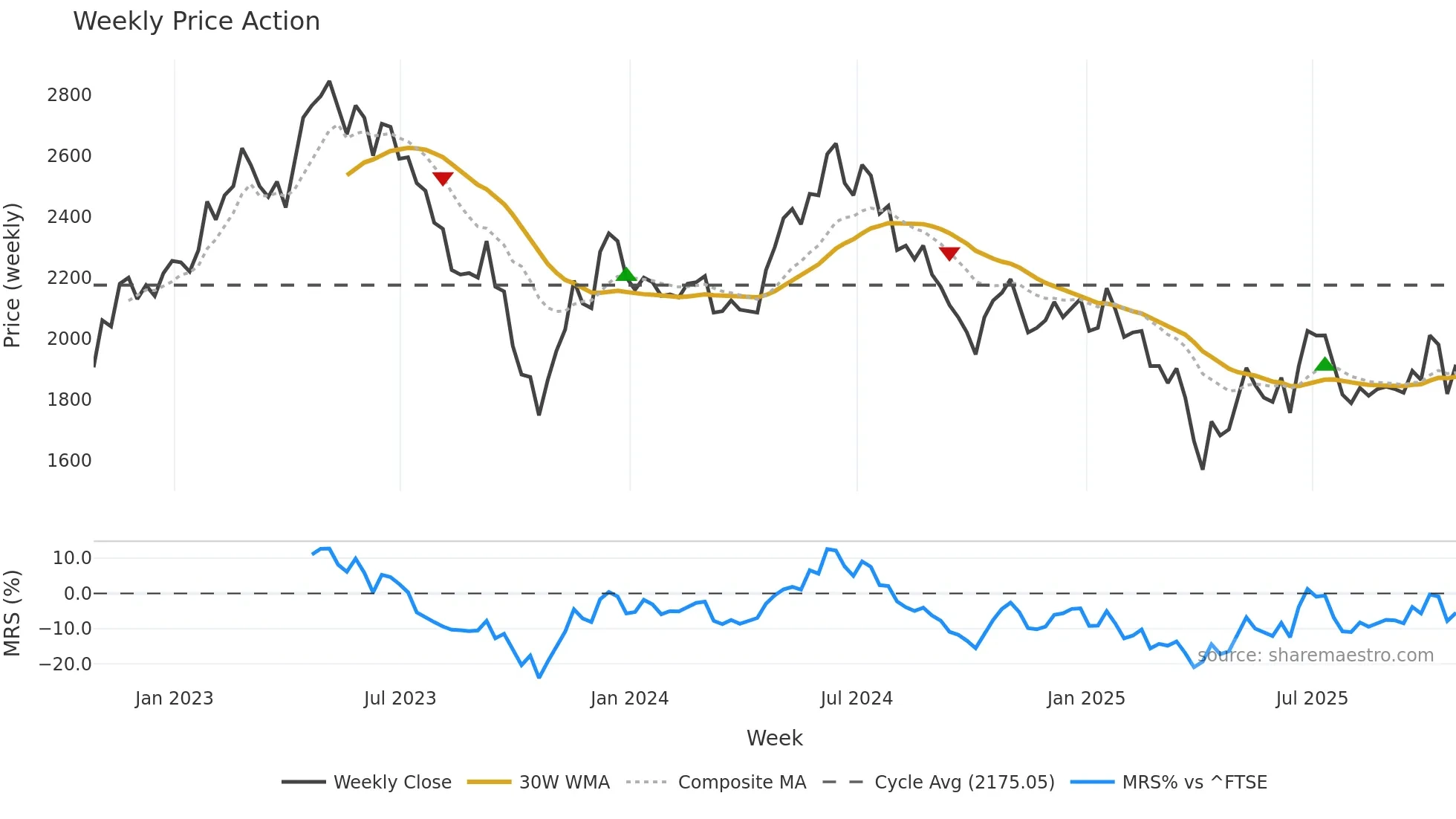






Price & Volume (8w)
Last week closed down (-0.31%), and over the last 8 weeks price is up (4.36%) with a rising slope (0.594%/w). Ranges are compressing (current 0.62× mean; 12th pct; realised vol ≈ 4.97%). Price spends time in the middle band (rising), participation is below typical with a selling-tilt bias (z -4.32), money flow is falling, and posture is above 30w & 50w (drawdown -4.78%). Balance is mixed; watch participation shifts and behaviour at the 30-week average.
Weekly Report (8w)
This week: market dynamics are constructive (early-trend state improving). In practical terms: backdrop leans constructive; pullbacks can be buyable if structure holds; alignment between price and intent improves reliability of advances.
- Look for shallow pullbacks holding above the 30-week average.
Market Cycle (Mean Reversion Context)
Convergence / Divergence (SI vs Price)
(New − Old) / Old × 100.
Compression Ratio compares the latest range to the recent average (e.g., 0.72× means tighter than usual).
Range Percentile shows where the latest range sits within the recent distribution (e.g., 38th pct).
Realised Volatility is the standard deviation of week-to-week Close→Close % changes over the window (a volatility proxy).
0.0=lower band, 0.5=middle MA, 1.0=upper band.
Values >1 or <0 are outside the bands.
%B slope is the weekly drift of %B — rising means price is gravitating toward strength.
Band location (lower/middle/upper) and Band trend (rising/falling/flat)
summarise where price lives and whether that placement is improving.
Proprietary Analysis: All Sharemaestro charts, signals, and insights are unique to our platform. We do not follow conventional market models - this proprietary approach is what sets Sharemaestro apart.